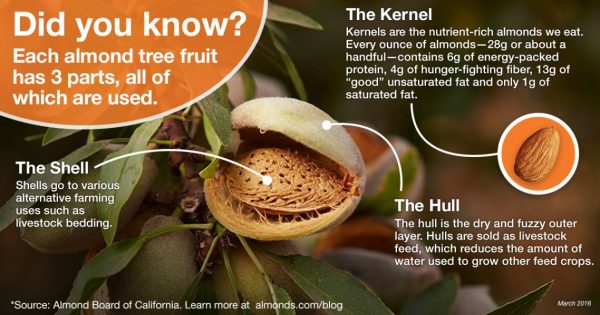Keen observers must realise that we have skipped the nut development stage. Recall that the play-by-play went silent after flowering and pollination; that is much more interesting because the process is quite visible, beautiful, plus added drama with the effects of spring weather. Since we like to keep things in-the-moment, Stage 2 Growth will be deferred until next time.
We are at Stage 3: Maturity. We can easily follow because, again, the phases are externally visible. The fruit components, beginning with the core, is the actual nut kernel, a hard shell, and enveloping these is the hull. 
The hull is of interest because at this stage it starts to split. The inshell nut is exposed in varying degrees. The kernel is still benefiting from irrigation water and nutrients but 85% of its growth development is already complete.
Hull Split (dehiscence) is the term. The hull is openable by hand at this point but in nature dehydration at the edges will fully expose the shell changing the shell color from white to brown. A separation (abscission) between the hull and the tree begins. Once this happens the fruit might remain attached by a few fibers. These fibers will be broken during harvest when the tree is shaken and the nut falls to the ground.
There are external factors to consider during this split phase. The hull must remain turgid by guarding against water stress and nutrient deficit to reduce sticktights. Too much irrigation risks hull rot. It’s a question of management timing; in other words, it only looks easy 😉
The hull split occurs from the top of the tree progressing downward. Harvest will usually commence at about 95% hull split but may occur sooner to avoid risk of NOW (Navel Orange Worm) or early fall rain.
Stay close! Harvest is next.